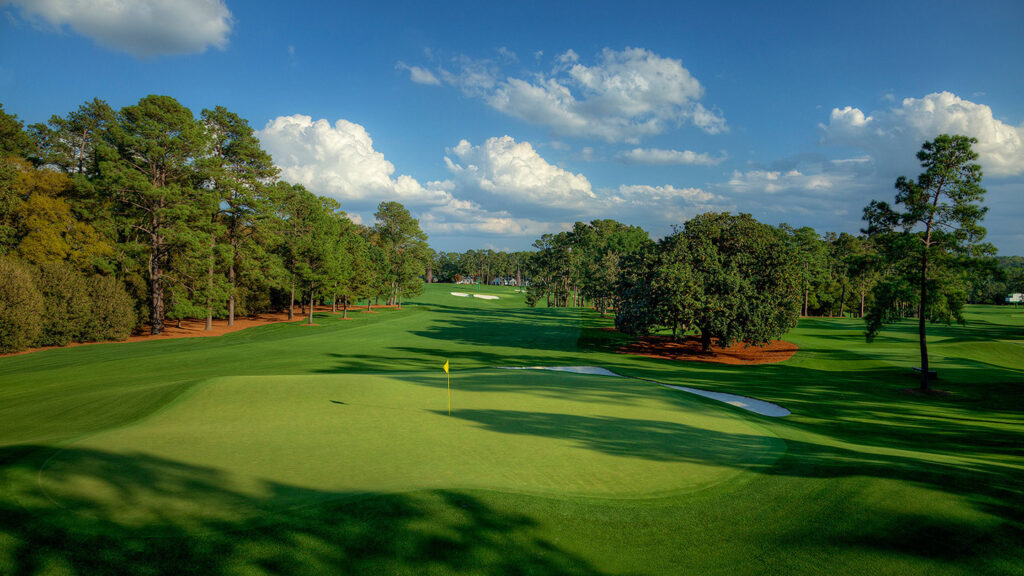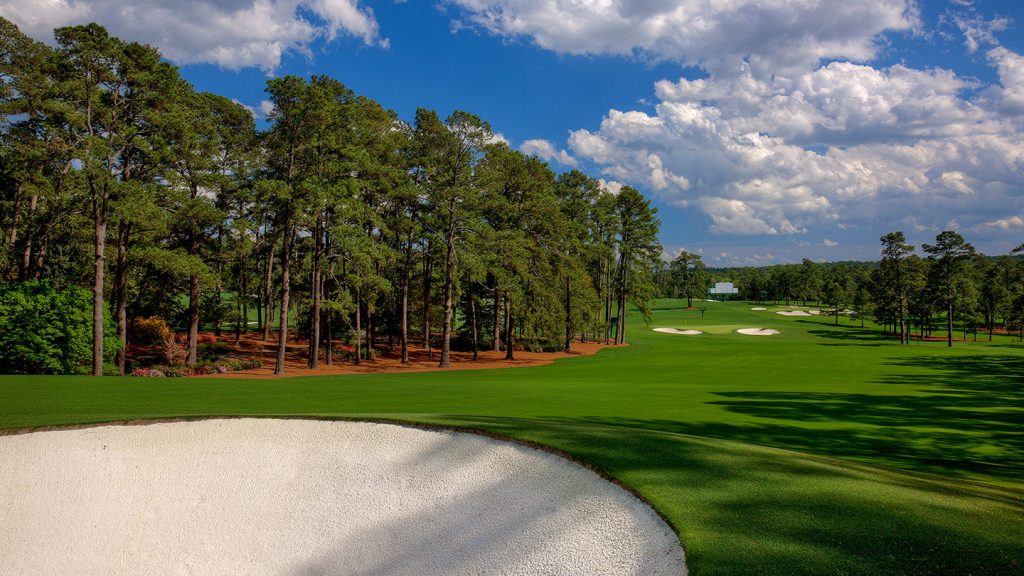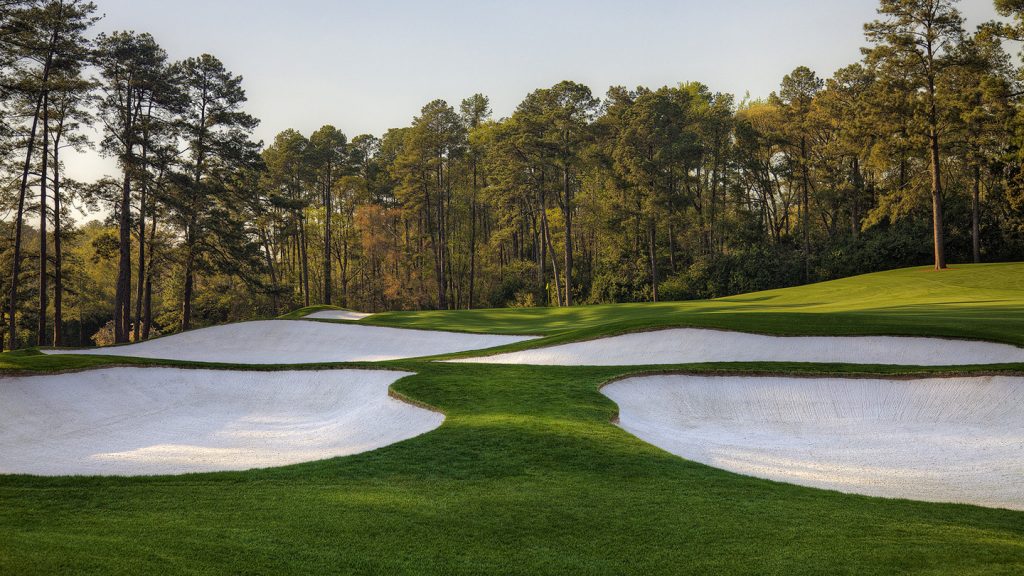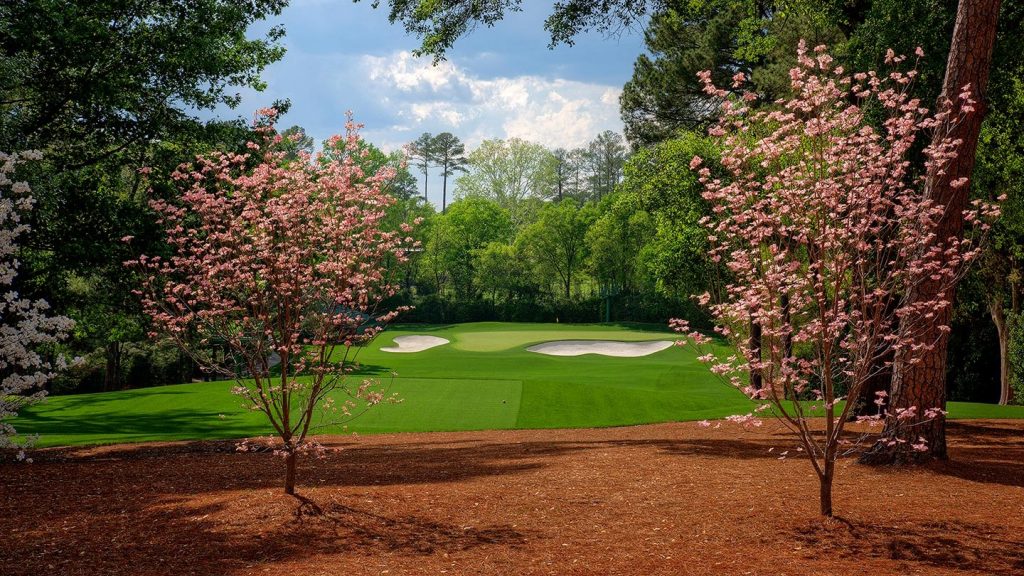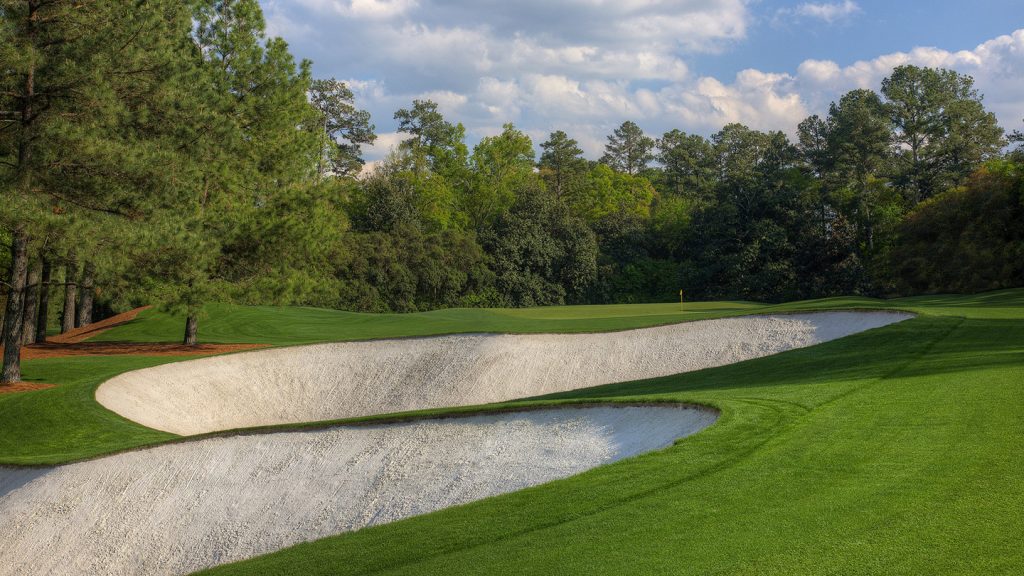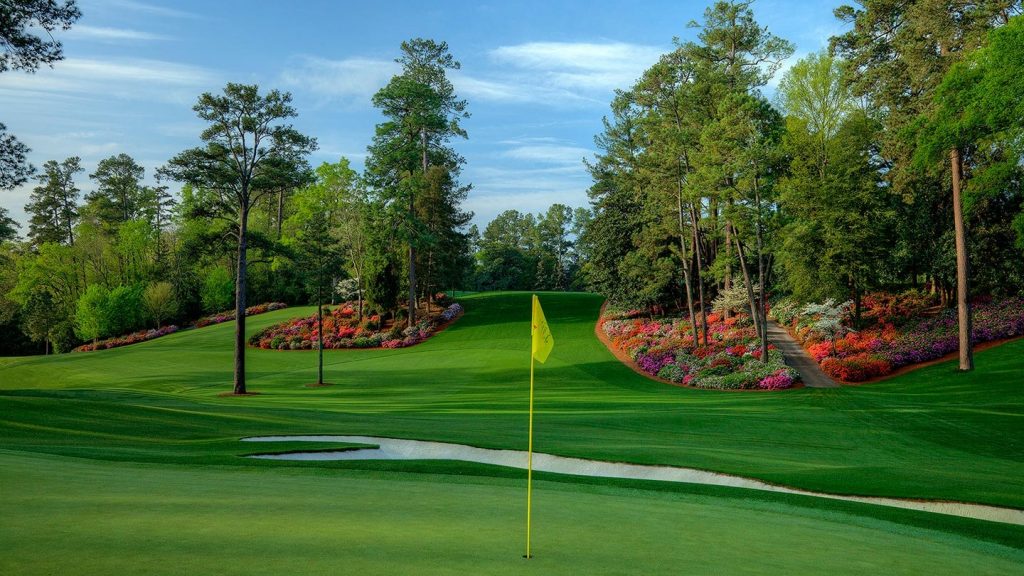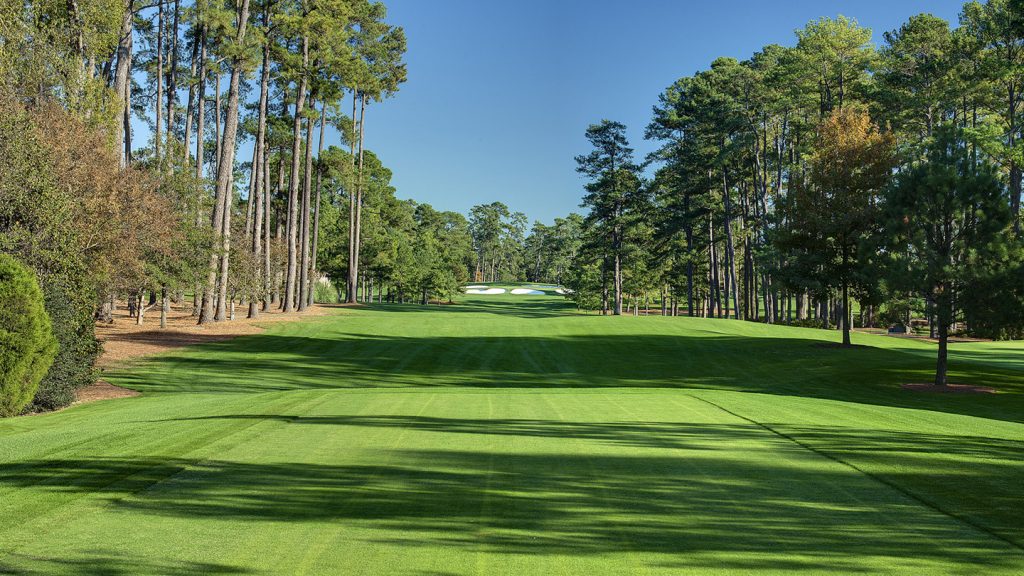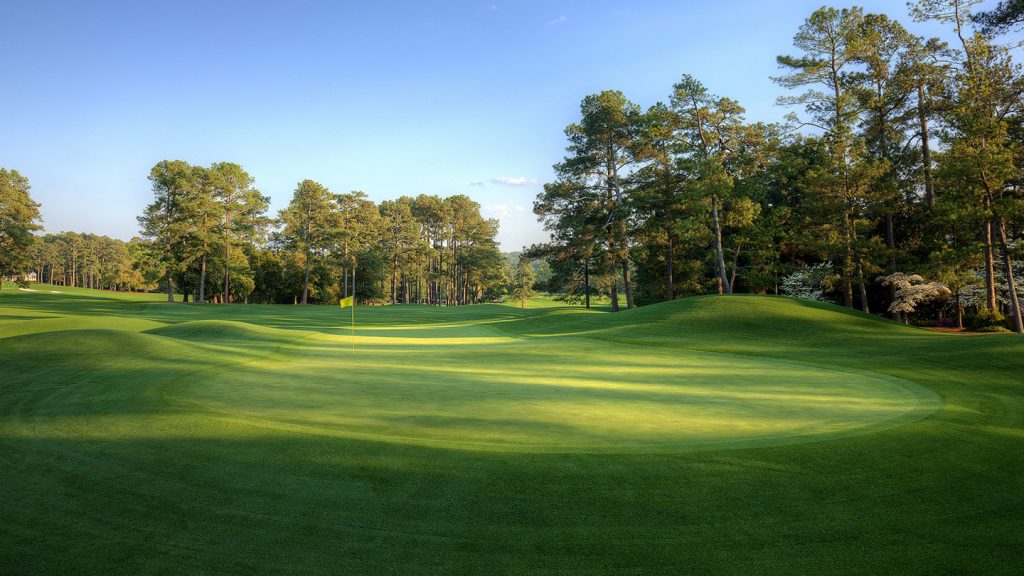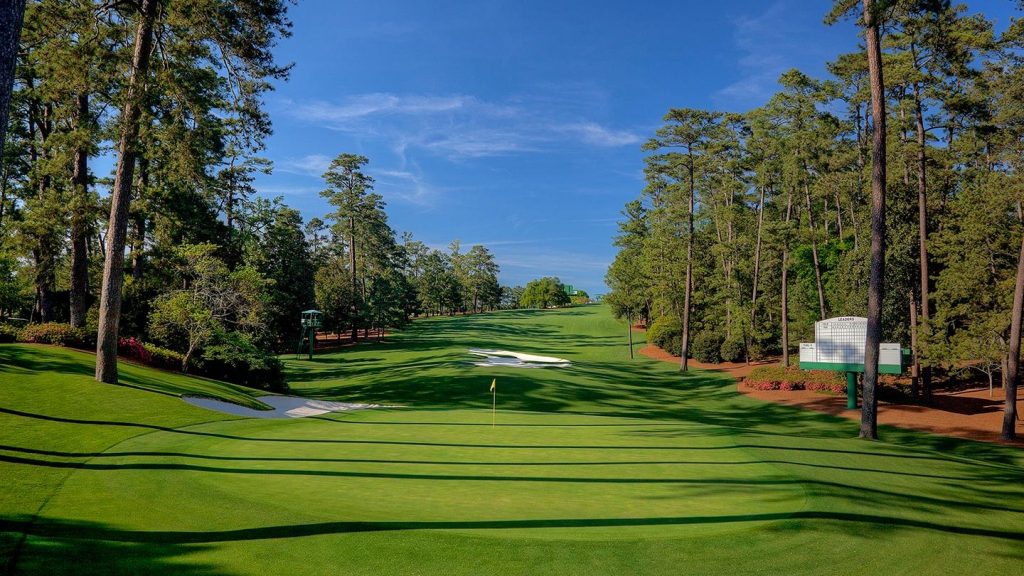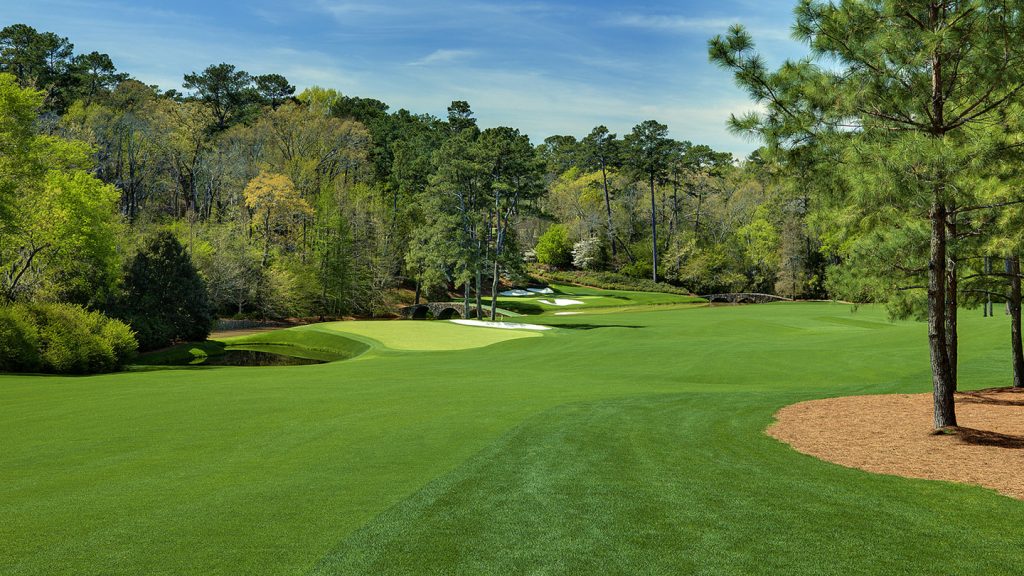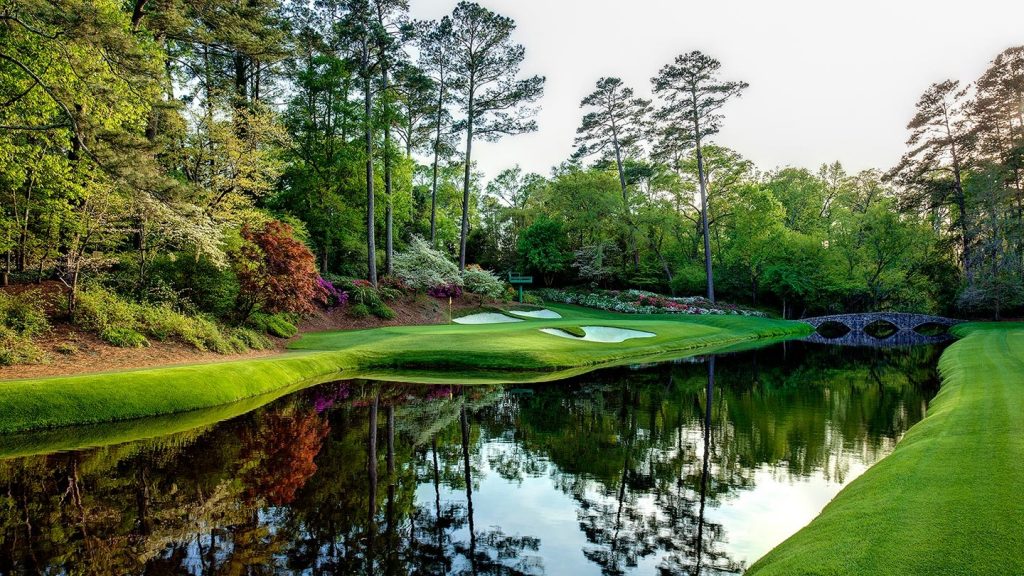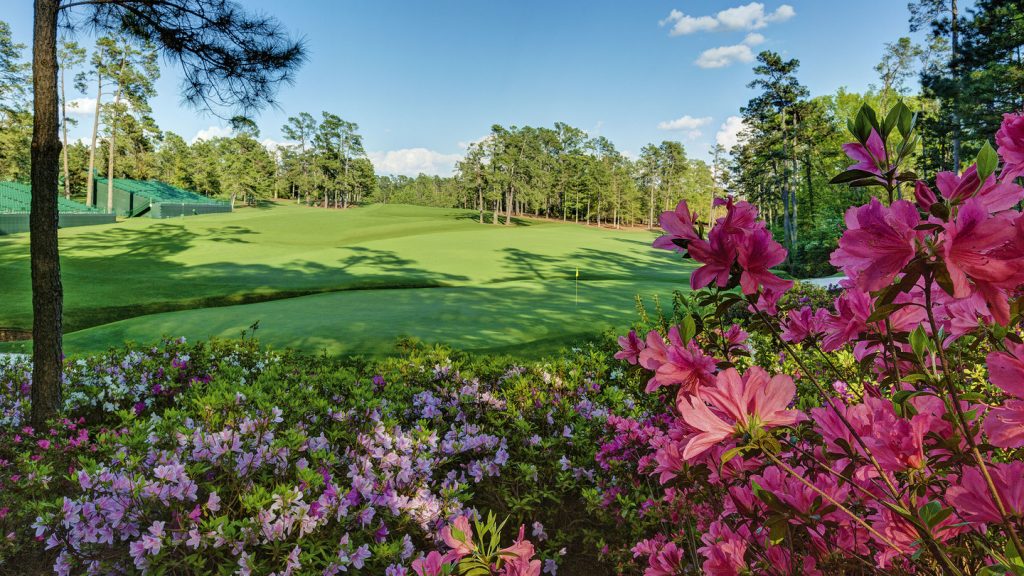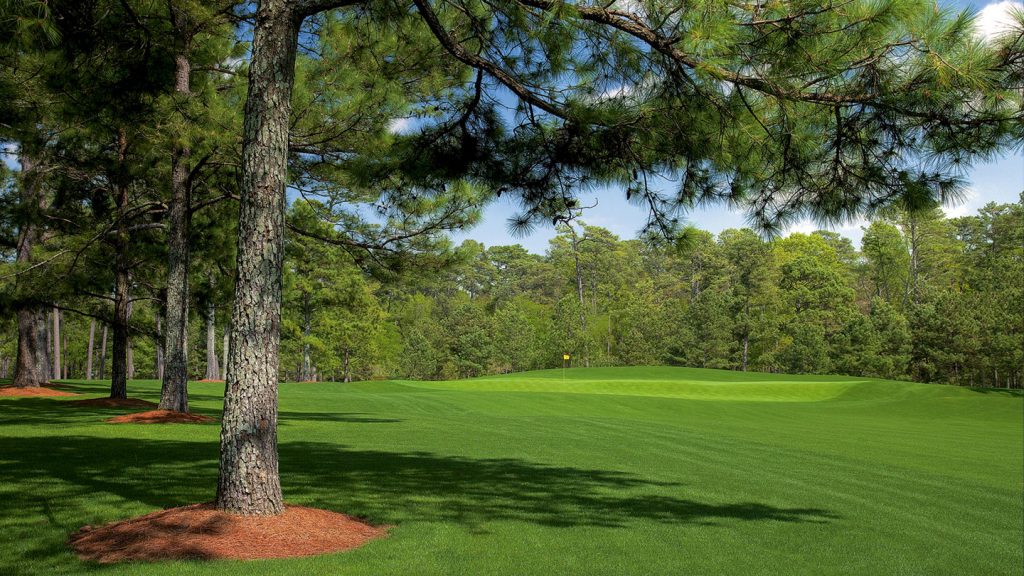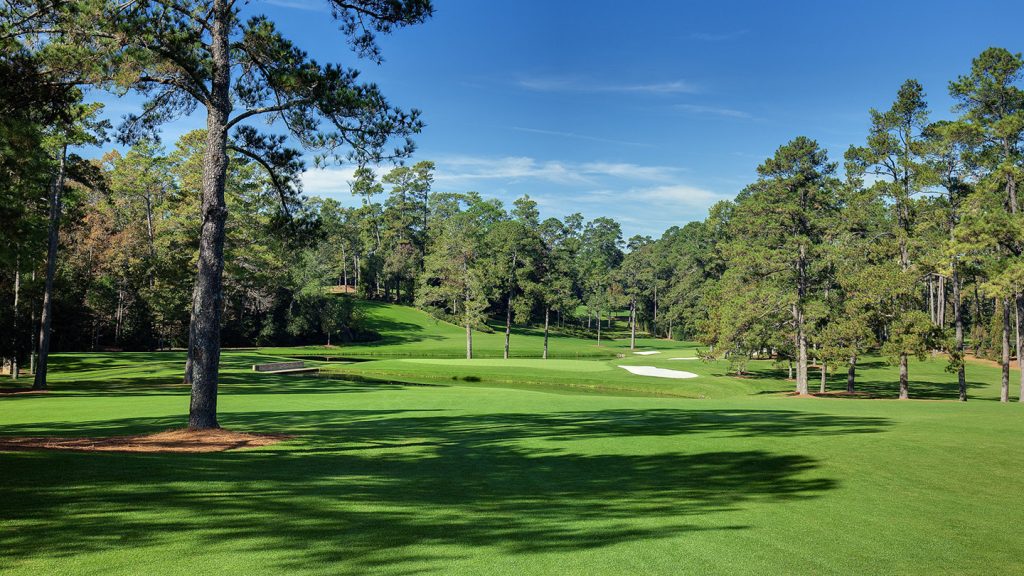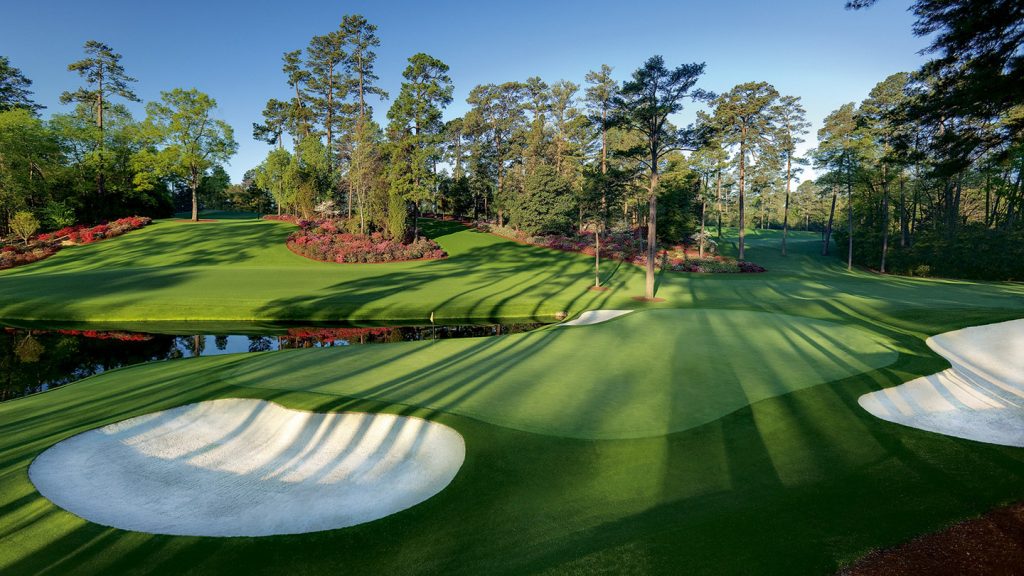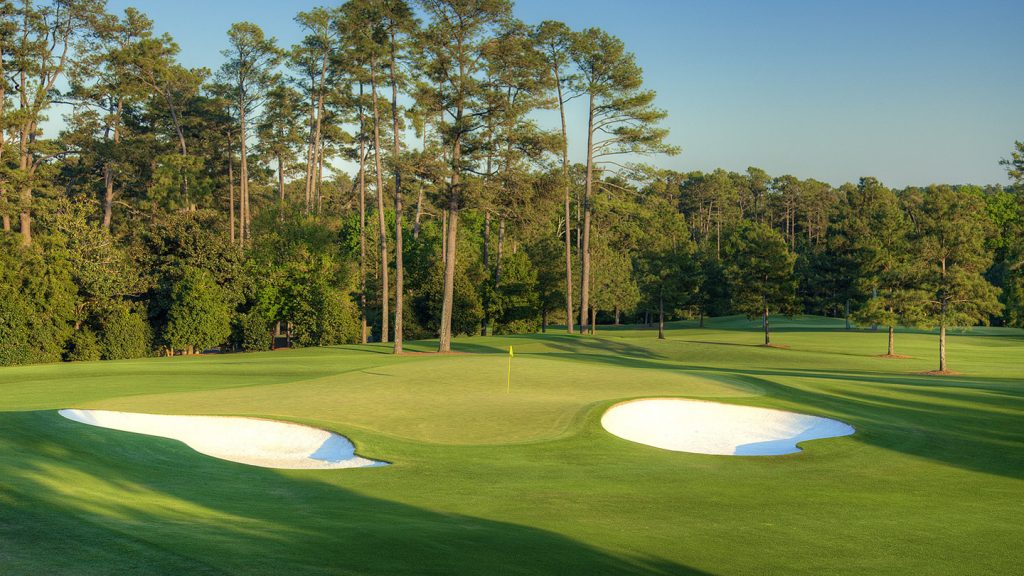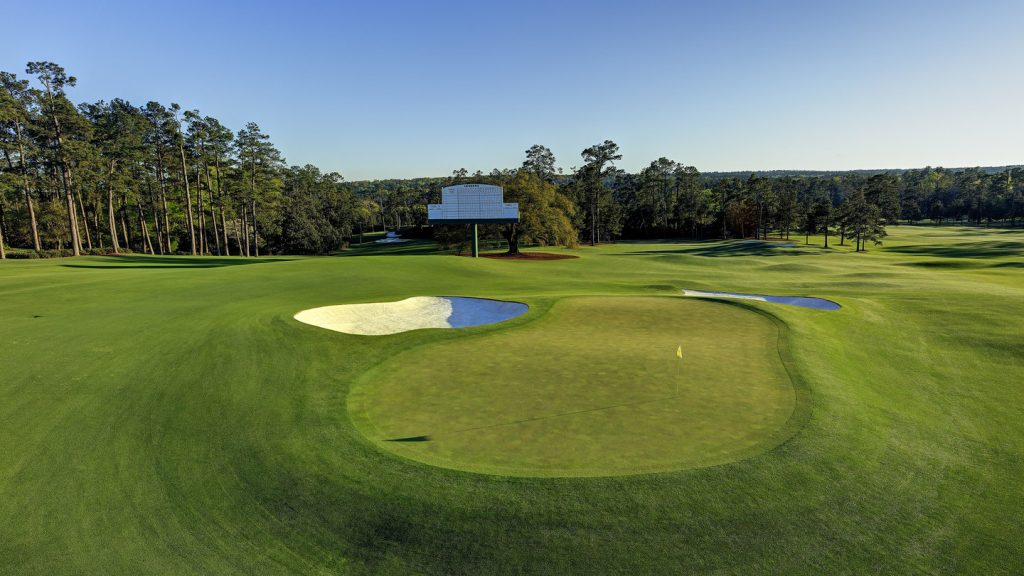Adam Scott will always be remembered as the first Australian to win the Masters.
After two top-10s in the two years proir, Scott bought Australia to a halt on Monday morning (Australian time) in 2013 when he was fitted with the famed Augusta National members green jacket to end a long, overdue 77-year wait.
And now on the 20th anniversary of Scott’s first Masters in 2002 Scott describes how to tackle all 18 holes of Augusta National.
HOLE 1: TEA OLIVE | PAR 4 | 445 YARDS
This is a terrific opening hole. I’ve made everything from a 3 to a 6 here. The first tee shot in the Masters is one of the most intimidating tee shots you will ever hit. The build up to the tournament has been so long, and you’re excited it has finally arrived.
It’s not overly difficult, but under the circumstances it can be tough, and at times during my career, I have struggled on it.
However, one of my best moments here was the shot I hit from the right-hand fairway bunker at the opening hole in 2013 that led to a birdie. It was just such a great way to start the Masters. Depending on the drive and conditions, the approach can range from a 6-iron to a 9-iron.
As for putting, I think it’s one of the more severe greens you will ever see, but it sometimes gets overlooked because it’s the first hole on the course and not where the drama of the tournament happens. Given that, if you can put the ball in the middle of the green and two-putt all four days, you would be very happy. It’s really that challenging.
HOLE 2: PINK DOGWOOD | PAR 5 | 575 YARDS
Here’s a hole that probably looks like an automatic birdie, but it’s far from it. The tee shot is the crucial element to No. 2. You have options. You can hit driver or you can lay back with a 3-wood.
Driver likely brings the bunker into play if it goes through the fairway. That forces you to hug the tree line left, which obviously has its dangers. A 3-wood takes the bunker out of play, but it still needs to be accurate. Anytime you’re not in the fairway at No. 2, then par is all of a sudden a very good score.
The second shot is all downhill and hitting a 2- or 3-iron, or 3-wood off that kind of lie makes it difficult to hit the green. That’s a long shot — anywhere from 220 to 270 yards.
Still, there’s not a lot of true laying up here. Most of us will try to get it as close to the green as possible because most pin placements favor a pitch from just short of the green, which can lead to an easy birdie.
HOLE 3: FLOWERING PEACH | PAR 4 | 350 YARDS
This hole starts with a demanding tee shot, but the approach is where it’s all at. The hole can turn from an easy birdie to an easy bogey quickly, as I showed it by making three birdies and a bogey here in 2013. It’s down to inches at times at this hole.
The margin for error is so slight. Around the bunkers, it’s a small landing area, and if you’ve laid back on the tee shot, it’s a wedge or a 9-iron that you have to be pinpoint-accurate with.
For me, more often than not, I’m hitting driver off the tee, based on the theory that it limits the chances of disaster. I’m not sure it increases my chances for birdie, but being that close to the green after one shot is a better option.
When the pin is on the left side, you have a very shallow area of green to work with, so great accuracy is needed, whether you’re hitting a wedge from 130 yards or pitching up from 60 yards. Which shot is more difficult is debatable. They’re both very challenging.
HOLE 4: FLOWERING CRAB APPLE | PAR 3 | 240 YARDS
From the back tee, No. 4 is quite an intimidating challenge, especially when the pin is on the front left of the green. There simply is no margin for error on that shot. It’s one of those holes that seemingly every year catches somebody and they make a big number there.
It’s usually a 3-iron to a 5-iron from the rear tee under normal conditions. Depending on wind and cold, though, it can be a two-club difference. I’ve even hit 2-iron there at times. From the up tee, it’s only a 7- or 8-iron, but the officials tend to make the pin position more difficult with the shorter distance, such as locating it in the back-right location.
The main note that everyone should have for the fourth is never to take a club that could possibly go over the green. It’s completely unplayable from the back bushes there. That said, it’s hard to judge when the wind is blowing, and you have a long iron in your hands. The 5-iron I hit to 25 feet and then two-putted for par in the final round of 2013 works every time.
HOLE 5: MAGNOLIA | PAR 4 | 455 YARDS
Most of the time, I’ll hit 3-wood off the tee here. Although it’s the smart play, it also leaves me back far enough that I can’t really get a great look at the green. I can see the pin no problem, but I can’t see most of the surface.
The reason I don’t hit driver to try and squeeze it up into the neck of the fairway is that it just brings a lot of trouble into play just for the sake of a better look at the green. I’m much more comfortable with a 3-wood. That leaves me a 6- to 8-iron in, depending upon where the pin is located.
The green is quite interesting, with a large front swale that often comes into play. Like No. 4, though, you don’t want to be long here, so that can bring the swale into the equation.
I’ve always picked a spot five yards over the nose of the swale and that’s my point to hit the ball every time, regardless of where the pin is located. In the final round of 2013, I hit 3-wood, then 7-iron to about 12 feet and made a textbook par.
HOLE 6: JUNIPER | PAR 3 | 180 YARDS
I thought this hole would play much shorter than it actually does. It’s not as much as you would think. Although the elevation drop from tee to green here is substantial, the difference is actually not quite a full club most of the time. That’s one of those things you learn over time here. I hit 6- and 7-irons here a lot.
The green is particularly severe, with a very difficult pin on the top right. When it’s placed up there, it’s time for you just to step up and hit a great shot. There’s really no option for a smart, safer play.
The front-left side of the green is an easier spot to be aggressive off the tee because the putting surface slopes back toward the tee. That allows you to try and use the slope on the left side of the upper plateau to bring the ball down from the right and kick it in toward the hole.
On the other hand, if you try to do that and miss it right, then you are in all kinds of trouble trying to putt down that steep slope. I typically tend to go for the middle of the green when the hole is located on the left side. It just provides a good margin for error.
HOLE 7: PAMPAS | PAR 4 | 450 YARDS
Here’s a tee shot that’s absolutely crucial to hitting the green in two shots. If you miss the fairway, it’s highly unlikely you’ll have an opportunity to hit a clean approach.
For whatever reason, I feel like the tee box lures you to hit it down the left side — and that side isn’t good at all. It’s difficult to find the green from there. I tend to tee it on the left-hand side of the tee box to give myself the most open view of the fairway possible.
I always hit driver now. If you hit 3-wood, you’re likely to end up on a downslope, and that’s not what you want when you’re hitting to a small, multi-level, raised green that’s heavily protected by bunkers. Hitting from a downslope just isn’t conducive to bringing the approach in high and soft, which is what you need to do.
I think the most difficult hole location is front left. There’s no room to miss there. If you aren’t precise and you hit left of the hole, you’ll probably watch your ball roll off the green. In fact, long, right and left are all pretty nasty in terms of being able to get up and down. You might have some hope if you’re short, but not much from those other areas.
HOLE 8: YELLOW JASMINE | PAR 5 | 570 YARDS
Here’s a hole where you can go for the green in two, but it can be very risky. After a good drive, there’s usually an opportunity to hit a smart lay-up shot that will leave a very accessible pitch. That strategy often provides a better opportunity for birdie than if you go for it in two and aren’t successful.
Mistakes can be made easily by being too greedy with your second shot. You don’t want to be down in the trees on the left side and behind the big mounds near the green. Also, depending on pin placement, there are a number of spots where if you miss it hole-high on the right, you’ll have little room to pitch the ball.
Bottom line: If you’re tempted to try for the green in two, think twice. I typically try to either hit a shot very close — say five yards short — or 60 or 70 yards away. I’m very comfortable with those distances. That said, I did go for it in the final round in 2013 and was able to hit a 2-iron onto the green. Unfortunately, I three-putted for par.
HOLE 9: CAROLINA CHERRY | PAR 4 | 460 YARDS
The tee shot at No. 9 appears to be wide open, but you have to be aware that hitting to the left side is to be avoided at all times. That said, the hole has one of the most generous fairways we play at Augusta National. There’s a lot of room out there to place the ball, with right-center being optimal.
The most challenging shot here is the approach because you are often hitting a short iron from a downslope to an elevated green. It is not as easy a shot as it appears because it’s not a common feeling or something we practice very much. Considering all of those factors, it’s difficult to get comfortable with the distance, and distance is key because the green has three shelves. It’s critical to be putting from the proper one.
If you can do that, you’re in excellent shape. In the final round in 2013, I hit a wedge to about 10 feet and had a good look at birdie. The ball didn’t go in, but I gave myself a chance because I put the ball on the right tier.
HOLE 10: CAMELLIA | PAR 4 | 495 YARDS
This is a memorable hole for me because it’s where I won the sudden-death playoff in 2013. I tend to hit 3-wood off the tee here all the time. It’s one of the easier clubs for me to turn right to left, and that’s a requirement on this hole.
On my approach in the playoff, I had an in-between yardage. It was a back pin placement, and I felt if I hit a 7-iron, I would come up well short, while a 6-iron opened the possibility of being long — and hitting long at No. 10 is about as bad as it gets at Augusta National. I took a little off the 6-iron and put the ball within 15 feet.
Although the green has a severe pitch, it’s a more constant slope than those found on other greens with tiers or shelves.
On the putt to win, it was getting dark, and it was more difficult to see the break. With the constant light falloff, it’s easy to underestimate the break, so I had my caddie, Steve Williams, come in and have a look. He actually doubled my read from one cup to two and that turned out to be the right amount.
Hole 11: WHITE DOGWOOD | PAR 4 | 505 YARDS
The addition of the trees on the right side of the fairway has made this an exceptionally strong hole from tee to green. There’s no longer any chance of bailing out to the right and getting away with it anymore. However, it is a generous fairway, and there’s considerably more room than it appears, particularly on the left side.
That said, the farther left you go, the more angle you have working against you as you approach the green.
This is a perfect example of where the beauty of the design by Alister MacKenzie and Bobby Jones comes into it all. The angles those legends put on this golf course are nothing short of superb. Probably the only time you will take dead aim on this hole is when the pin is on the back side of the green. In that situation, you can pick a club that you know will carry the water and be a little more aggressive since there is no point hitting out to the right and making an error to that side.
The green’s back section receives the ball very well because of its slope from back to front and provides an excellent birdie opportunity.
HOLE 12: GOLDEN BELL | PAR 3 | 155 YARDS
This hole just changes so much from Thursday or Friday rounds to the final 18 on Sunday. When the pin is on the right side of the green, the margin for error is small, and it’s caught me up the last two years, which has been annoying. But it’s that kind of hole. In the 2013 final round, I managed to hit a solid 9-iron to 25 feet, make my par and got on with it.
The front bunker is sneaky deep, and it’s certainly not a gimme up-and-down. The back bunker is not an ideal situation either, because you’re hitting back down the slope toward the water. You need to be careful and maybe just take your medicine a little bit and hope to hole a good putt for par instead of trying to get it close.
The winds can be such that you might have to hit anywhere from 7-iron to pitching wedge. And when it’s blowing, you just have to trust your club selection, try to time your shot and hope that things work out the right way. There’s always a lot of talk about the winds here and all of it’s true, but you just have to stand up and hit a good shot.
HOLE 13: AZALEA | PAR 5 | 510 YARDS
There’s no question in my mind that No. 13 is my favourite hole on the course. The quiet of the tee box, for example, is a great spot to take a quick break, and the approach shot is stunning with the flashed bunkers behind the green, the flowers and the whole risk-reward aspect of the hole.
The tee shot here is one where you simply have to go with your feel. Some players like to hit 3-wood, but I almost always go with driver. My 3-wood tends to run through the fairway, so since I have to draw the shot anyway, I figure I may as well hit driver. There is a lower tree on the corner of the dogleg that you want to visualise shaping it around.
That should leave about a 6- or 7-iron to the green. I caught a good break in the final round in 2013. I hit a 7-iron well and thought it was fine, but I pushed it a few yards.
The ball hit and spun back toward the creek. Luckily, it somehow held up on the bank, and I made birdie. When you win tournaments, you often get a bit of luck. That was mine right there.
HOLE 14: CHINESE FIR | PAR 4 | 440 YARDS
At the 14th hole, the uphill tee shot is one you have to pay attention to, but it’s not overly difficult, especially if you can draw the ball.
This hole provides another example of a green that dictates how you play your approach shot. The toughest pin placement is probably middle or back left. It used to be even tougher a few years ago. There was a tree that’s not there anymore that used to hang over the left edge of the green and sometimes came into play. Hitting that little left-hand shelf is risky because if you miss left, then you really have no shot to get it close due to the pitch of the green.
The putting surface is much like that of No. 5, where you can take your medicine and play to the middle some 30 to 35 feet away and play for a two-putt par.
It can be an opportunity hole at times, too. We’ve seen some feeder pins and some exciting things happen here. It’s the beauty of the Masters. You can turn the Tournament on its head by making a 2 here or a 3 on one of the par 5s and come from nowhere to lead.
HOLE 15: FIRETHORN | PAR 5 | 530 YARDS
Here’s a hole where you really want to hit a good, strong tee shot that finds the fairway because it sets you up for success. I like the idea of deciding early in the week that if I have more than a 4-iron to the green for my second shot, then I’m probably not going to go for it. We’ve seen a lot of big numbers on this hole and, at some point, you have to cut it off. That’s where I draw the line. Making that decision beforehand takes any uncertainty out of it.
Having said that, the third shot from the lay-up area is no bargain, either, because of the tight lie and downhill slope. The farther back you lay up, the flatter the lie you’ll usually have, but we all have it in our heads that we want to be closer to the pin.
At the Masters, you just have to be disciplined in executing your game plan. And you really have to practice your wedge game. You’re not going to win at Augusta National hitting poor wedge shots. There are just too many times, including this hole, where you’re going to have to hit a good one.
HOLE 16: REDBUD | PAR 3 | 170 YARDS
This is one of the great, iconic par 3s in golf. The pond that stretches from the front of the tee to the green gives you just enough to think about, and the green demands precise placement of your tee shot.
In 2012, I was lucky enough to make a hole-in-one when the pin was in the back-left hole location. I hit a 7-iron and, unlike the ones that you see funne
The hole has some feeder pins on the left side, while the right-hand ones are more difficult. Good shots get highly rewarded and poor ones severely punished. I’ve managed to avoid the bunkers on the right for some time, but I have been back there in the past and it’s not an easy play.
It’s an especially bad position to be in if the pin is on the right half of the green because if you hit the putt just a little too hard, the ball could roll off the ridge that runs down the center of the green, from front to back. In that case, it’s very likely the closest you’ll be putting from is 40 to 45 feet. The slope is such that there’s just no way to stop it.
HOLE 17: NANDINA | PAR 4 | 440 YARDS
The Eisenhower Tree no longer protects the left side of the fairway at No. 17. However, I really don’t think it has altered how we play the tee shot all that much, except for the shorter hitters. And personally, I like the look of the hole now from the tee.
The approach shot is usually only about a 9-iron or so to the putting surface. Still, you have to be aware that since the green sits up fairly high on the property, it’s one of the firmer greens on the course. It’s also in the open, so the winds blow across it all day long and dry out the grass a bit more than some of the others.
That leaves you less room for error in distance control as you hit to the green. You need to be pinpoint accurate with the shot for any chance at a birdie.
I was able to do just that in the third round in 2013 when the pin was set in the back-left location and made birdie. On that shot, you just want to get your ball over the ridge and let it work its way to the back part of the green. I did that and it left me a slightly uphill putt that I was able to make.
HOLE 18: HOLLY | PAR 4 | 465 YARDS
The tee shot at Augusta National’s closing hole probably looks a little more intimidating on television than it actually is. It’s one of those tee shots that I’ve gotten quite comfortable with. I aim at the bunkers and have my drive fall a little bit to the right.
It’s important to find the fairway because you don’t want to lose a stroke so late in any round, especially on Sunday if you’re in contention. From the right trees or left trees, it’s very hard to get on the green.
The approach is uphill, adding close to a full club — maybe more to the back pin. That’s a hole location that requires a firm commitment, but caution, too, because you can’t afford to go long. It’s a real scramble from there.
The birdie putt I made in regulation on Sunday in 2013 was one we’ve seen a few times. I was thinking of the putt Mark O’Meara made to win in 1998. Mine was very similar, perhaps a bit longer. I also had a similar putt in 2011 — when Charl Schwartzel won — that I missed. I remember thinking I hadn’t played quite enough right-to-left break that time, so I gave it a little bit more, and it just caught the left side and fell in.
** Story and photos – www.masters.com
